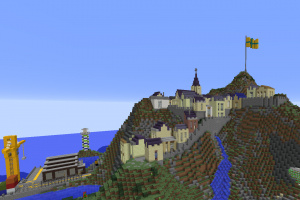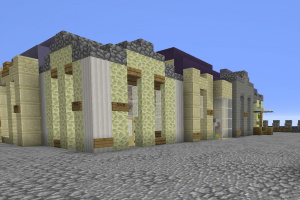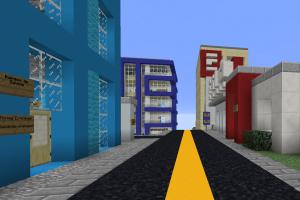| Please make sure your email address matches on the wiki and website as we'll be migrating to PCB logins in the near future. |
Savoie Maritime
Savoie Maritime
Savoie Maritime is a french-speaking island located in the south-west of the Project City Build (PCB) Creative 1.12 map. It borders the city of West Somewhere to its West, with Barcalos to its North.
History
The Island of Savoie, discovered in 1732 by the renowned French explorer Potato321, was at first nothing but a small, poor fishing colony to the French Crown, but when massive coal deposits where discovered in 1801, the island was flooded by immigrant workers from neighbouring colonies, and soon became an economic powerhouse in the region. After 20 straight years of overmining, the island's coal reserves where depleted, and with it, its status in the French Monarchy.
During that same time, the French Revolution was also taking place. The poor, unemployed and radical population of Savoie Maritime had an extreme lack of confidence towards the newly-forming French Empire, and staged massive riots in the streets of the city. Napoleon, the at-the-time emperor of France, established the Autorité gouvernemental de Savoie Maritime (Governmental Authority of Savoie Maritime) and made Savoie a self-governing autonomous overseas territory of France.
At the fall of the French Empire and the establishment of the still current République Française, the economy of Savoie was still in shambles. With nothing but a long-abandoned coal industry, an uneducated and impoverished population, and little to no federal funding due to its self-governing autonomous status in the French Government, the island's future did not look prosperous. But, in 1914 when World War I broke out in Europe, the French mainland started beefing up its military establishments throughout its colonies. Savoie Maritime received much needed funds, which it used to transition its economy from industrial to service-based.
Barely surviving the hardships of the Great Depression, the outbreak of World War II was a lifesaver for Savoie Maritime. The government of France immediately chose Savoie for its top-secret nuclear development program due to its remote location. This program Revitalized the economy and infrastructure of the island, with the construction of a massive nuclear research stronghold and bunker, and the island-wide Trans-Île Route 1 highway.
The french nuclear program managed to remain entirely undiscovered until construction was being done on the Casino and Hotel in early 2018, where part of the nuclear bunker was unearthed.
Modern-day Savoie is now heavily tourism and oil driven, with the largest proven oil reserves on PCB in its Exclusive Economic Zone (EEZ), and its delicate European architecture. With no sales, income or gambling taxes, it's also a haven for the wealthy. Foreign investment, especially in the banking sector, are also driving the once impoverished island to being once again a regional economic superstar.
The modern people of Savoie Maritime are some of the best-educated in the world, with average intelligence rivaling those of South Korea and the United States. GDP per capita is also relatively high, at about $83,000 USD annually. To pair with this, the life expectancy is the highest on PCB, at 84 years for men and 89 years for women.
Geography
Savoie Maritime is a mountainous island, and at it's highest point, [Mount. Savoie] is 159m above sea level. The city itself is split between the Haut-de-Ville (Uptown) and Bas-de-Ville (Downtown) regions. There is only one staircase to get to the Haut-de-Ville, which has become somewhat of a tourist attraction. The island, being very rocky, does not have any beaches, but does feature an indoor waterpark.
Not many plants are native to the island, mostly mosses and shrubs that can grow in its harsh climate. The landscape is comparable to that of the island of Newfoundland, in Canada.


